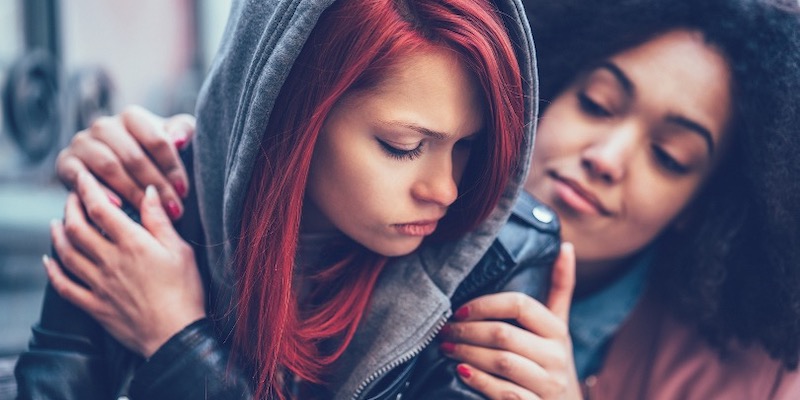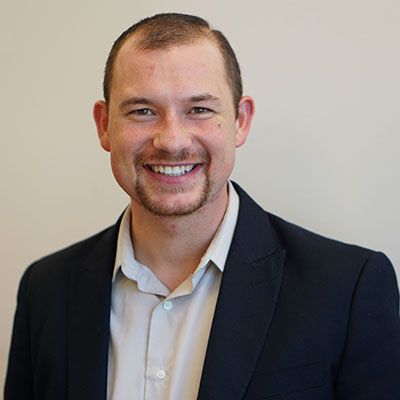In this big and interconnected world we live in, it’s easy to become desensitized to tragedy. As communication and media technologies carry information around the world in an instant, reported tragedies can float to the back of our awareness as we carry on with our lives.
But even in this state of the world, some tragedies tear our hearts in ways that we can’t ignore. The recent school shooting in Uvalde, Texas, was that kind of tragedy. In a small town, 19 students and 2 teachers were massacred in their classroom just days before summer vacation. How can an 18-year-old—someone barely older than a child—be so senseless and cruel? How do shootings like these continue to happen in a modern society? Events like these shake us. There is a public sense of urgency to find answers and act before more shootings like this happen again.
As many parents, educators, and communities look for these answers, it may be wise to acknowledge another connected tragedy much larger in scale and all around us: the national epidemic in youth mental health. New CDC data released this spring revealed that more than four in 10 teens report feeling “persistently sad or hopeless.” Meanwhile, during the last decade, emergency room visits by children and adolescents rose sharply for anxiety, mood disorders and self-harm, while suicide rates grew by nearly 60 percent. This epidemic was one probable factor affecting the shooter in Uvalde; and it may also affect those who lost peers, friends, and loved ones due to his actions.
The causes of depression, anxiety, suicide, and school shootings are complicated. There is no panacea, and curbing these tragedies certainly isn’t the sole responsibility of schools or educators. But from what I’ve seen visiting innovative schools and classrooms and talking with their students, teachers, and leaders, I wonder if at least one essential part of the solution is a fundamental change in how we do schooling.
Following are a few examples of how schools and classrooms can help support students’ wellbeing and mental health. As you read them, keep in mind that they aren’t just stories of especially caring adults or support-focused communities. They are stories of places where these supports are the norm because education works in a fundamentally different way.
Set up systems that allow teachers time for empathy and sympathy
From the moment I walked into Kareem Farah’s statistics classroom in Eastern Senior High School in Washington, D.C., in April 2019, I could tell it wasn’t like other high school classrooms I had experienced. When the bell rang to mark the start of the class period, there was no call to attention, no prodding students to get out their materials and start working, no performative showmanship to captivate adolescent minds, and no heavy-handed discipline. Students came into the room, took out their notebooks and laptops, and started doing math. As they worked, Farah floated around the room: checking in, telling jokes, answering questions, offering help, and giving advice as needed.
Ten minutes past the bell, a student came in late with a hoodie over her head and her backpack clutched to her chest. Avoiding all eye contact, she went straight to the back of the room, sat down at a vacant table facing a wall, and put her head down on her bag. As Farah and I both observed this moment from the other side of the room, he whispered to me: “You know, normally it would be my professional duty to make her get out her notebook and pay attention. I would need to make clear that her education is too important to let it get interrupted by whatever happened before she walked in.”
At first, Farah let the girl sit where she had planted herself, and he continued working with other students. A minute or two later, however, he went over to her, unnoticed by the rest of the class, and started to chat. I didn’t hear the words they exchanged, but soon after, she had her notebook out and was working away.
Teachers who take time to give individual students empathy and support aren’t completely out of the ordinary in schools. But what made Farah’s case remarkable was that he’d developed a system of online lessons and self-paced activities that made such human interactions a normal part of students’ daily experiences. By empowering his class to drive their own learning, he could step back from delivering whole-class lessons and focus his attention on his students’ individual academic, social, and emotional needs.
Nip high school drama in the bud with mentor teachers
After touring Innovations Early College High School a few years ago, I sat down with the school’s assistant principal, eager to ask about a palpable difference I noticed in the school’s culture. Somehow, it seemed they had completely eliminated the cliques, bullying, and pecking orders that plague most high schools. “Oh no,” was her response to my inquiry, “we still have all those issues. These are still teenagers and they still have drama. The difference is that our teachers cue into those issues as soon as they bubble up and work through them with students long before they boil over into hallway altercations.”
At Innovations, every student has an assigned mentor teacher that checks in with him on at least a weekly basis to help him successfully navigate his high school experience. If a student isn’t turning in his homework in one of his classes, the mentor teacher helps him troubleshoot the study habits and patterns that are getting in the way. If a student is struggling to focus due to strained relationships with peers or at home, the mentor teacher helps the student work through those issues. Mentors also help students figure out their long-term goals and then develop an academic plan that moves them toward those goals.
Innovations’ teachers are able to take on substantive mentoring responsibilities in part because of how the school uses technology. Teachers at Innovations don’t spend their days racing through back-to-back class periods to deliver content. Instead, students do much of their learning online, which in turn frees up teachers’ time for mentoring. In short, Innovations has engineered a lot of social and emotional turmoil out of the high school experience by providing each student with a consistent, caring advocate and confidant at school.
Help students who face trauma find their path to success
For a student named Virginia, being successful in school was hard to do when real life challenges got in the way. She had generally earned As and Bs in her classes, but then when she was 15, her father took his own life, and the grief and trauma understandably affected her. At first, she tried to forge on with school, but she found herself making regular trips to the school nurse’s office in tears. After receiving treatment at a behavioral health hospital, she was diagnosed with Asperger syndrome, anxiety, and depression. Yet when her emotions overwhelmed her at school, teachers would often handle the situation by sending her to a detention room to calm down.
The next school year, Virginia tried her best to rally but unanticipated challenges struck again: two major surgeries caused her to miss a significant amount of class time. With two consecutive years of setbacks, she opted to drop out of school and look for work.
The course of her life changed when at the age of 22 she discovered Map Academy, a new high school in Plymouth, MA, designed specifically for young people who were not on track to graduate. For Virginia, Map Academy’s individualized approach to instruction, enabled by online courses, allowed the school’s staff to give her the support she needed. She described how “when you feel accepted and understood by teachers, it’s easier to talk to them. . . . They make us feel like we’re all equal. . . . In regular school, I would never raise my hand because I just felt like I was such an outcast. But here, they don’t let anyone feel like an outcast.” In spring 2020, Virginia earned her diploma and is now working on plans to get a postsecondary education in computer science or data analysis.
Key elements of a new architecture for schooling
In these examples, the design of the system is what makes it possible to support students’ needs as both learners and as humans. First, online learning enables the roles of teachers to shift from delivering content to getting to know individual students and helping them co-design their learning journeys. Second, the relationship dynamic between students and teachers shifts from conformity and control to care and support because learning isn’t dependent on students following instructions while a teacher delivers content. Third, the paradigm of school shifts from ranking and sorting in a zero-sum contest to helping every student succeed and thrive by mastering basic content and then developing their comparative advantage based on their unique talents and interests.
I don’t presume at all that the models I’ve described above can prevent every instance of school shootings, suicide, self-harm, or bullying. New approaches to schooling need to happen alongside other proposed solutions such as preventing people who are mentally unwell from having access to firearms and increasing mental health support for young people. But the models of schooling that I’m advocating for offer a solid way to change how our society supports students, and in doing so, could make a bigger impact in helping young people avoid the dark cliffs that some are stepping over.


